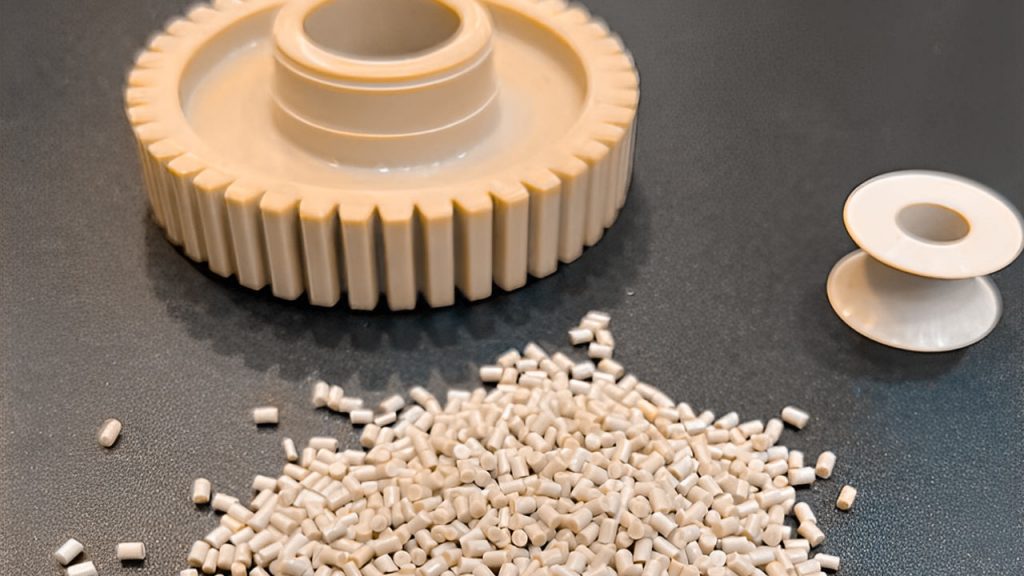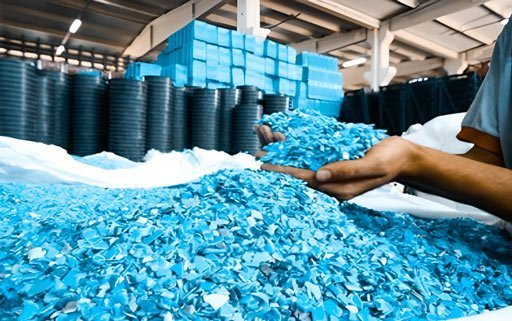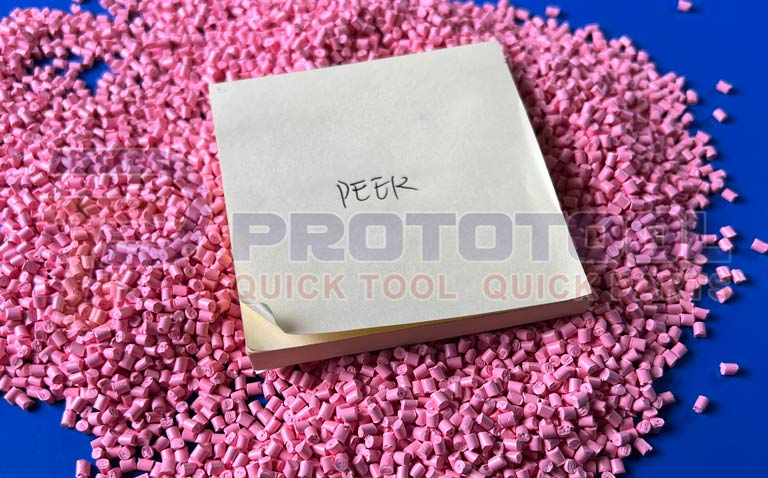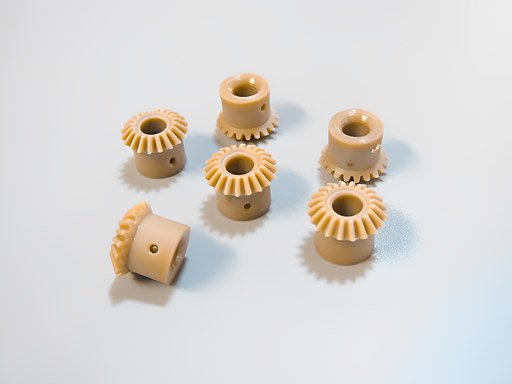PEEK injection molding, compared with other plastic injection moldings, needs to provide higher injection pressure, injection speed, and stable heating. In addition, you must pay attention to the conceção do molde, so it’s best to find a professional special plastic injection factory to produce what you want. It would be better if all of these were effectively controlled from the beginning of the conceção do molde, which can avoid unnecessary risks in production. This article is a thorough introduction to PEEK injection molding, including its types, applications, considerations, and other aspects.

What is PEEK?
PEEK, or polyetheretherketone is a semi-crystalline polymer and a high-performance engineering plastic. This material is biocompatible, has a high melting point (343°C), and has excellent mechanical properties. It is presently a popular research injection molding material. The advantages, features, and potential uses of PEEK injection molding are briefly discussed in this post.
O PAEK (PolyArylEtherKetone) category is the most prominent of the few high-performance polymers, with PEEK (PolyEtherEtherKetone) being the most prevalent.
Several types of high-performance polymers may only fulfill a single need, such as resistance to chemicals or extreme temperatures. On the other hand, most of them fall short of meeting different standards, such as resistance to wear or mechanical strength.
Among these qualities, PEEK excels in mechanical, wear, heat, and chemical strength. It can be recycled and repurposed without much hassle. High purity, corrosion resistance, and electrical insulation are additional features.
Additionally, PEEK does not require metal machining or thermoset curing to be mass-produced via injection molding, which reduces the number of processing steps required. In the end, you’ll save money and time thanks to this. In harsh environments, PEEK injection molding typically performs better than metal. Because of this, it is used frequently in the manufacture of the airplane and car parts, as well as medical and industrial components, semiconductors, and electrical and electronic gadgets.
PEEK Injection Molding Applications
With high-performance features, PEEK is one of the most popular plastic injection molding materials today because of its excellent all-around properties, which may allow it to replace traditional materials like metals and ceramics in many applications. Presently, its most common applications are in the aerospace, automotive, electrical, electronic, and medical device industries.

Industry of Automobiles
The automotive components industry in Europe is seeing the most significant growth in using PEEK resin. Components around the engine, variable speed transmission parts, steering elements, and so on were all manufactured using a PEEK plastic injection mould instead of some customary expensive metals. As the automobile industry adapts to the needs of miniaturization, low weight, and cost reduction, the demand for injection moulded PEEK resin will grow.
Aerospace Manufacturing
PEEK may still be utilized in certain airplanes despite aluminum being the material of choice in the aerospace industry due to its reduced weight. PEEK has better recyclability than aluminum, but it is more expensive to make, which is the material’s only real drawback.
Components for Workplace Equipment
In place of metal, PEEK resin may make lighter, fatigue-resistant, and oil-free components. This includes the separating claws of copiers, special heat-resistant bearings, chains, gears, and so on.
Applications in the Media
Medical analysis instruments, such as endoscope components and dental instrument cleaners, can all be made from autoclave-safe PEEK. With its high strength and low solubility, PEEK has also been used in liquid chromatography columns, tubes, and instrument analytical accessories. Due to its biocompatibility, PEEK has also primarily supplanted titanium as the metal of choice for artificial bone.
PEEK has several uses in electrical engineering since it is a high-performance material that retains its mechanical properties even when heated. Therefore, we might utilize it in high-temperature electrical tools like soldering irons.
Our experts have compiled the following information about PEEK to help you decide whether it is suitable material for your project.
Properties of PEEK Injection Molding
PEEK is a semi-crystalline, opaque substance that belongs to the family of polymers known as PAEK, which comprises aryl, ether, and ketone chemical groups. PAEK is a subset of the PolyKetone family of polymers. PEEK’s high melting point and excellent mechanical properties come from the aryl and ketone components in its composition. PEEK’s ether group allows it to be both malleable, which contributes to its toughness, and chemically inert, providing resistance to chemical exposure.

Let’s explore its characteristics, behavior, and impact on material choice across industries:
· Highly Effective Heat Resistance
According to testing, the maximum temperature at which PEEK may be used continuously is 260 degrees Celsius, and its melting point is 341. Because of this, you can use it widely in sectors subject to high temperatures, such as the oil and gas and automotive sectors.
· Ability to Withstand Exposure to Harmful Substances and Corrosion
PEEK is impervious to moisture and many different solvents (even when subjected to them in high-temperature and high-pressure steam conditions). Thus PEEK is ideal for use in the oil and gas industry, where chemicals can eat away at subsea pipes, gears, and machinery. It is resistant to jet fuel, hydraulic fluids, and de-icers, all of which are used in the indústria aeroespacial.
- Wear-Resistance
Studies have demonstrated that PEEK is more durable than other polymers and certain metals. PEEK is resistant to creep deformation under extreme loads and temperatures. Its low friction coefficient resists wear and tear and generates less commotion. Because of these advantages, it is an excellent option for use in automotive parts. PEEK also performs very well when tested for fatigue from repeated pressure and stress, another wear indicator. Because of its lower weight compared to comparable metals, it finds use in the transportation industry and beyond, particularly in cars and planes, where it helps save fuel. PEEK’s exceptional durability makes it an excellent choice for creating artificial organs and other medical devices.
- Biocompatibility
PEEK may serve dependably within the human body for long periods since it is non-toxic and does not harm living tissue. The quality makes it so useful for usage in medical implant components. However, due to its chemically inert and physiologically unresponsive nature, PEEK has a limited ability to attach to bone tissue after implantation in vivo.
- Resistência à tração
Tensile strengths of 29000 psi at 299°C are possible for PEEK-based composites reinforced with carbon fibre. In this way, it outperforms nylons, acetal (PolyOxyMethylene or POM), polyesters, and polycarbonates in terms of strength and stiffness.
- Low Flammability
With a flammability grade of UL 94 V-0, PEEK is safe to use in environments where temperatures reach over 600 °C during combustion. When burnt at high temperatures, it also creates less smoke. This is why it is so famous for making components for passenger planes.
- High-Quality Insulation
Because of its large volume and surface resistivity, PEEK can maintain its excellent insulating performance even when subjected to wide swings in temperature and other environmental factors.
- Reusable
PEEK may be reprocessed several times without changing in any noticeable way because of the extreme stability of its molecules. Companies may reduce their waste management costs while still accomplishing their environmental goals.
Types of PEEK Plastic
PEEK comes in five different grades, each with its composition and set of properties that define where it excels.
- Unfilled PEEK is the purest form of this polymer since it has no additional reinforcements. It is the most resistant to chemicals.
- One of the stiffest and most vital types of PEEK is one that’s been reinforced with carbon fibre. Compared to PEEK with glass reinforcement, it’s also 7 percent lighter.
- Compared to unreinforced PEEK, PEEK reinforced with 30% glass fibre is more robust and stiffer. It also provides excellent insulation against electricity and heat.
- To improve wear resistance and frictional heat capacity, bearing PEEK is injected with 20% PTFE and carbon reinforced with graphite.
- Electrostatically dissipative, metal and x-ray detectable PEEK. These PEEK varieties were created to meet the specific requirements of a particular industry or set of end-users. Example: static dissipative PEEK is designed for use in areas where conductivity is not an issue.

PEEK Injection Molding Considerations
While PEEK injection molding provides several benefits, its implementation is not without challenges.
The price is astronomical. PEEK is much more costly than standard technical plastics.
It may be difficult or impossible to achieve more acceptable degrees of contouring using PEEK due to its stiff nature.
PEEK may react with several acids, including nitric solid, sulphuric, and chromic acid. This eliminates its usefulness in a few situations.
While PEEK naturally has poor resistance to ultraviolet (UV) radiation, this may be remedied by using a carbon addition in the material’s composition.
Is PEEK Injection molding Right For You?
PEEK injection molding will be at the top of your list if you’re looking for an injection molding material that balances your performance needs, financial constraints, and environmental and sustainability goals.
Why Should You Choose PEEK?
You should calculate how much of a return on investment PEEK injection molding will deliver in light of its more excellent price, even though it will enable you to make lighter, stronger, and more chemically resistant components that will last longer. Prototool‘s material selection experts are here to provide a hand. With our help, even the most complex products may be designed and manufactured in weeks and brought to market.
Prototool will:
- Provide a selection of plastic materials to choose from.
- Assist in considering the pros and cons of each material option in light of your specific needs.
- Use established procedures to create and introduce your goods to consumers efficiently.
- If you want help with a project, don’t hesitate to get in touch with us, we are ready to provide professional advice happily here.










